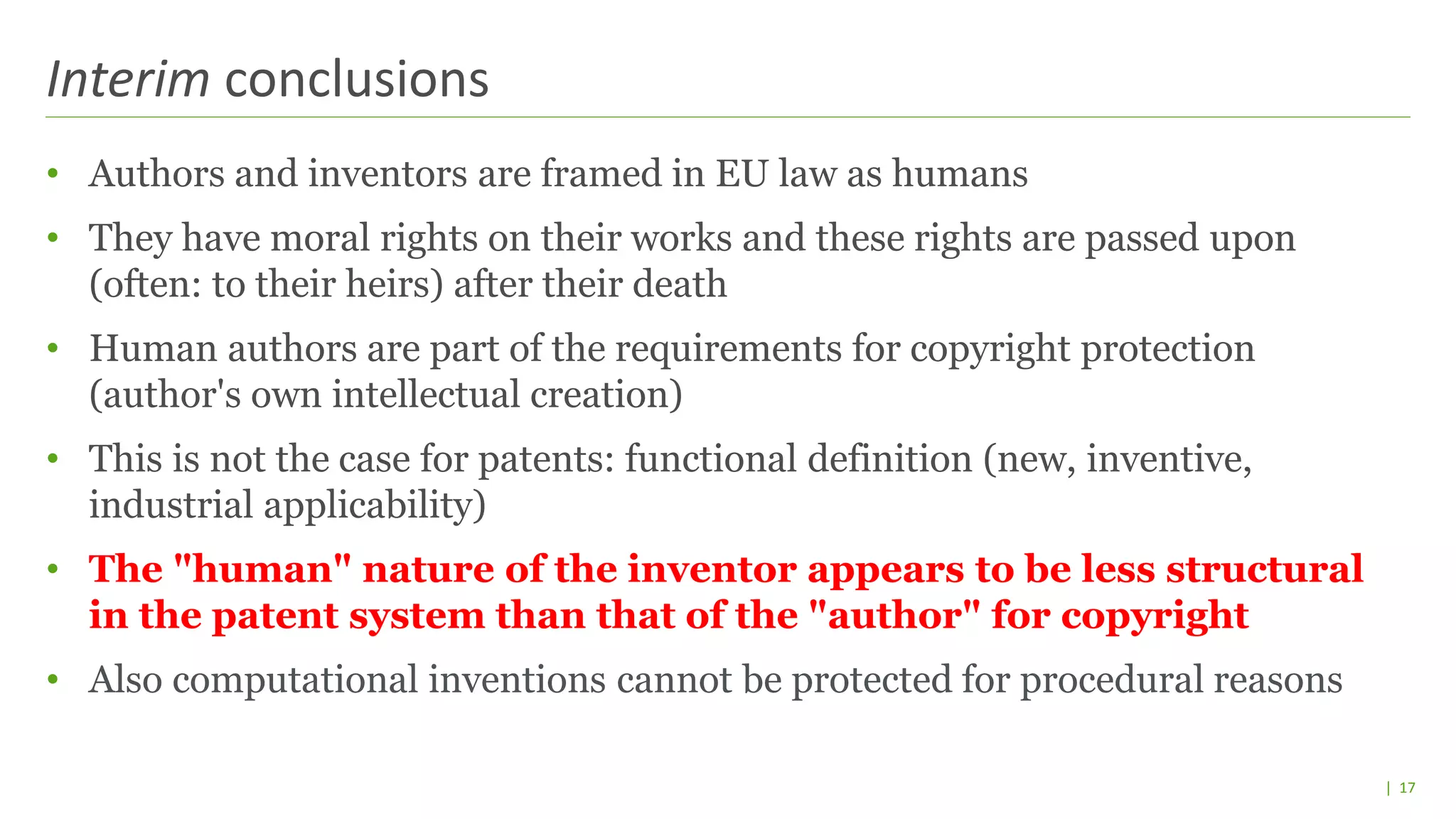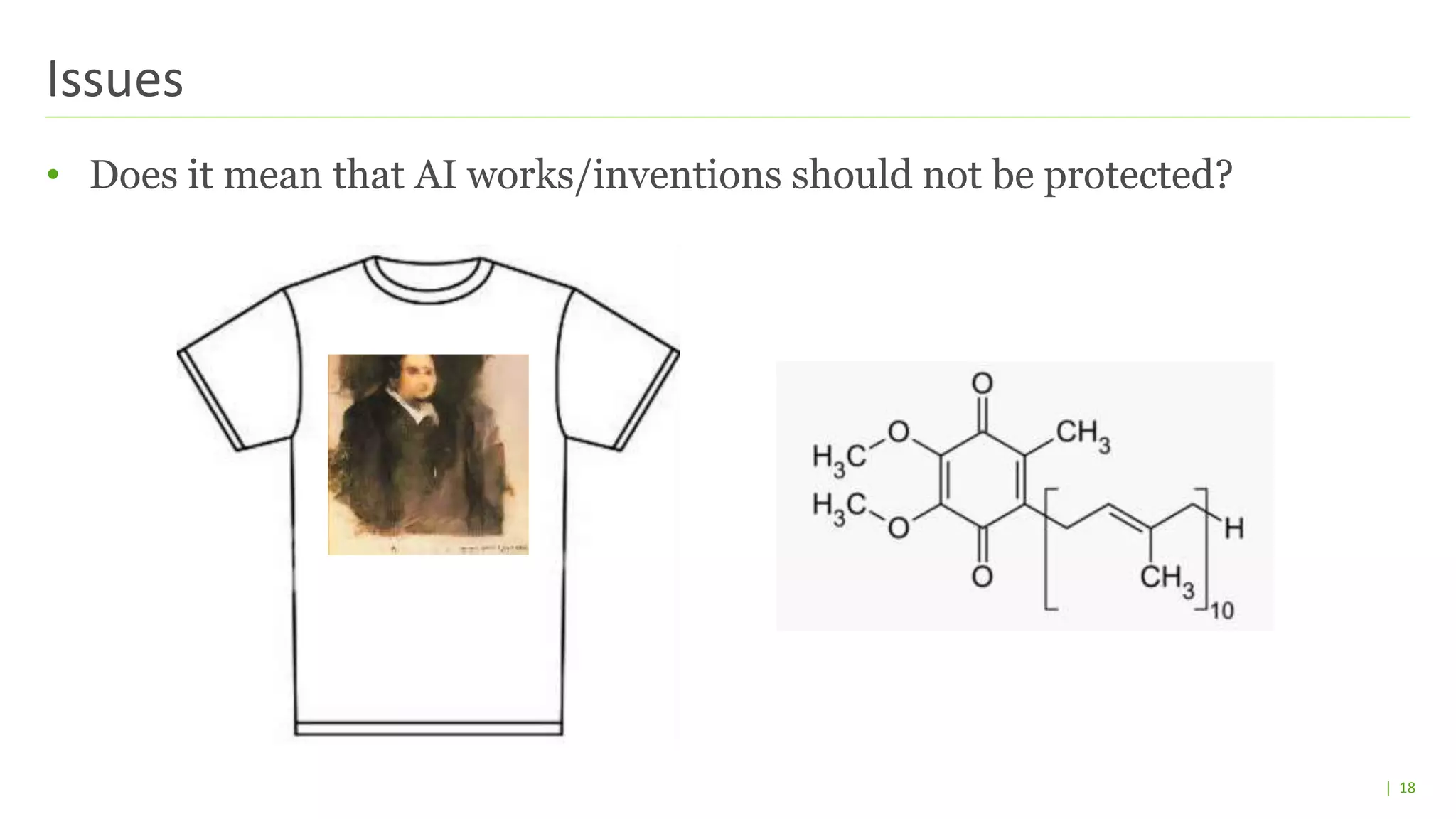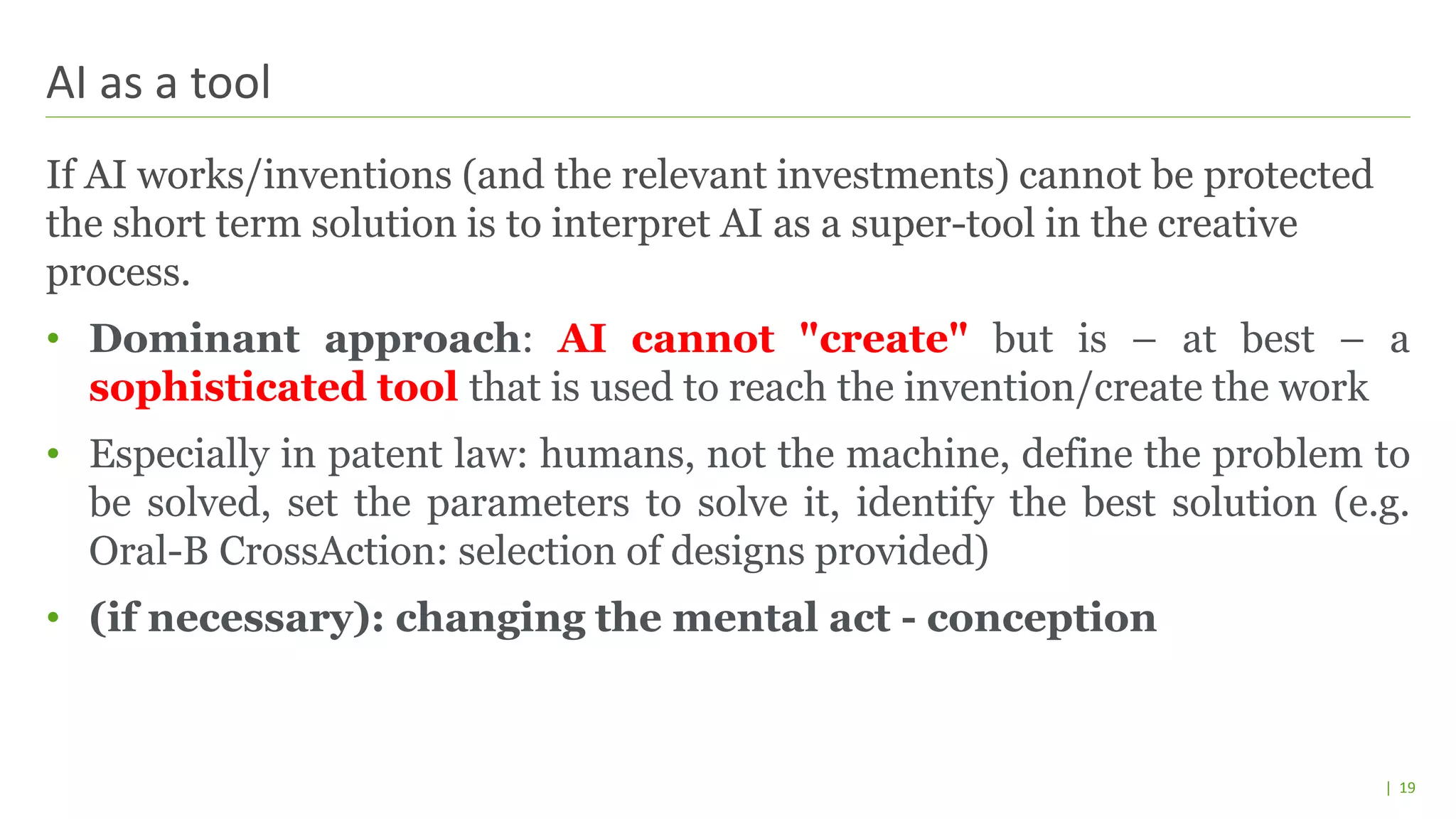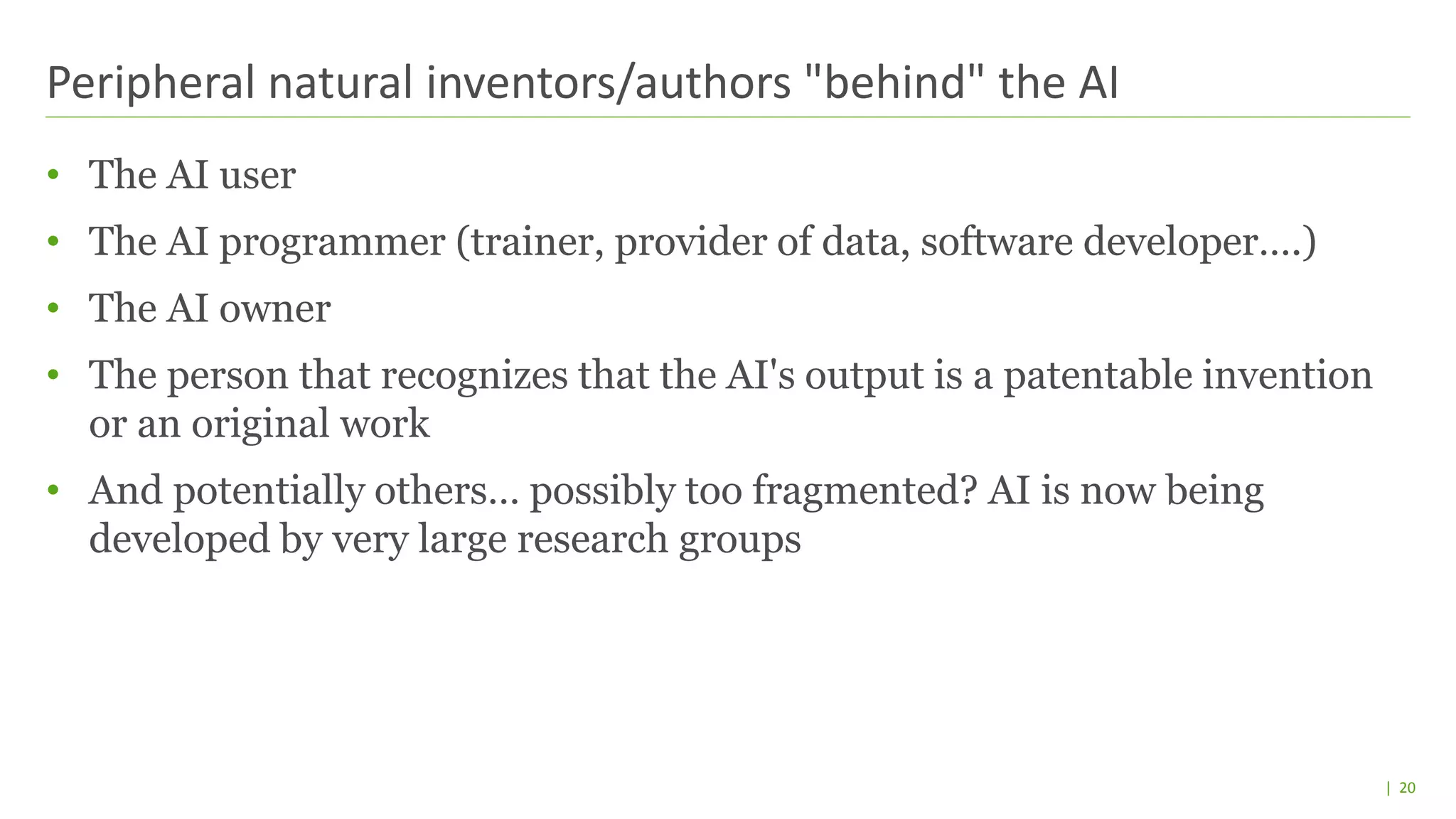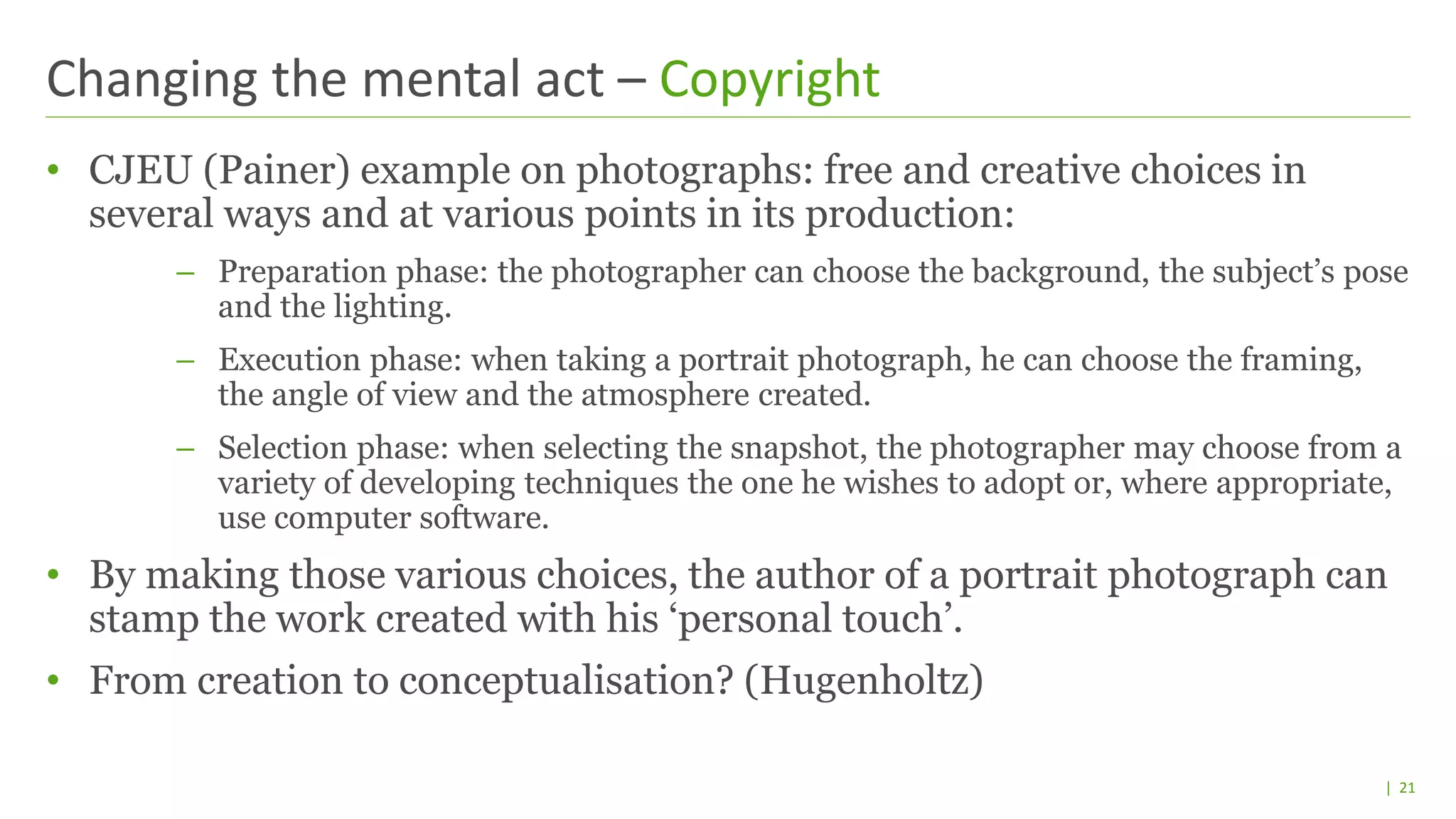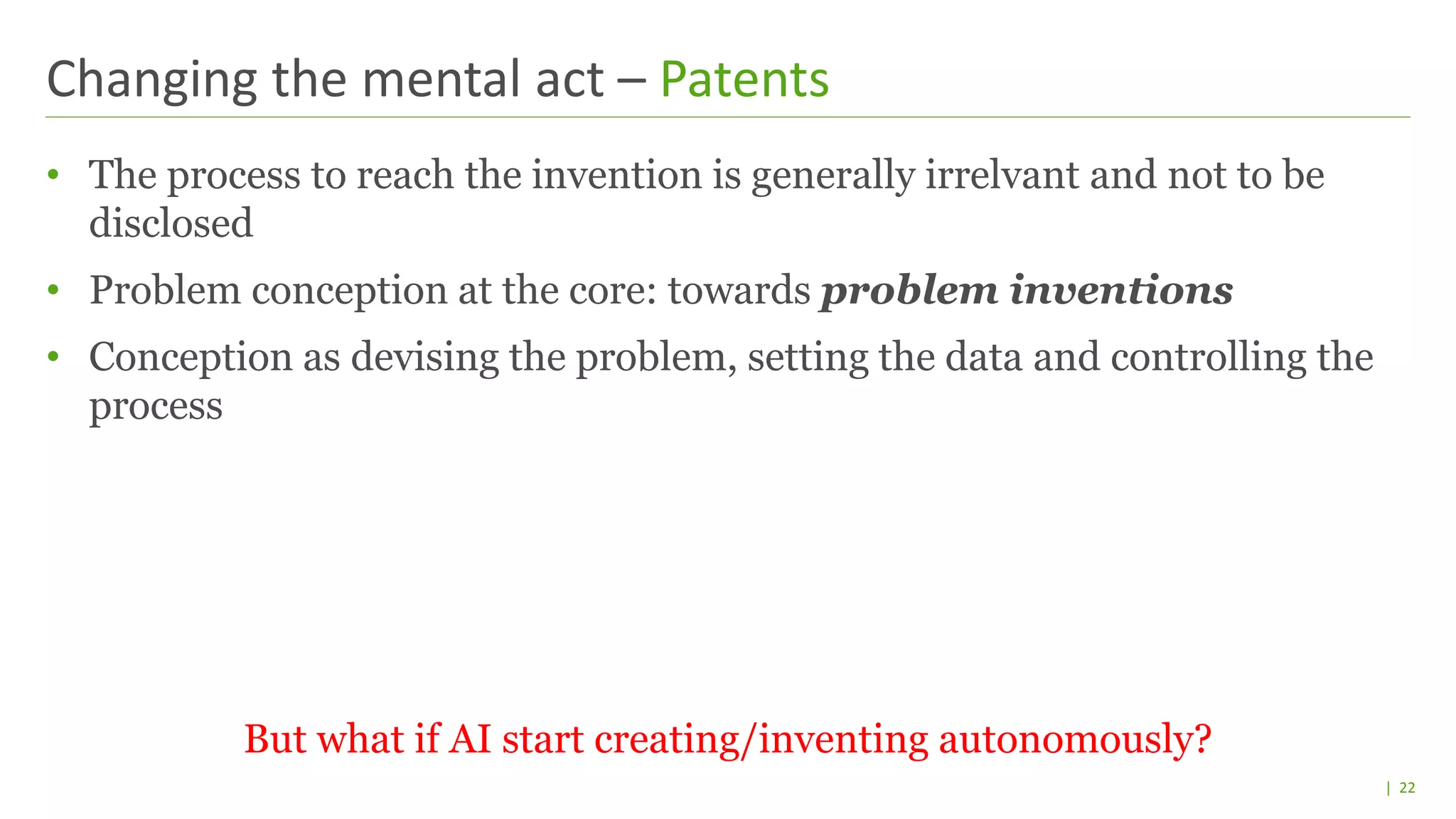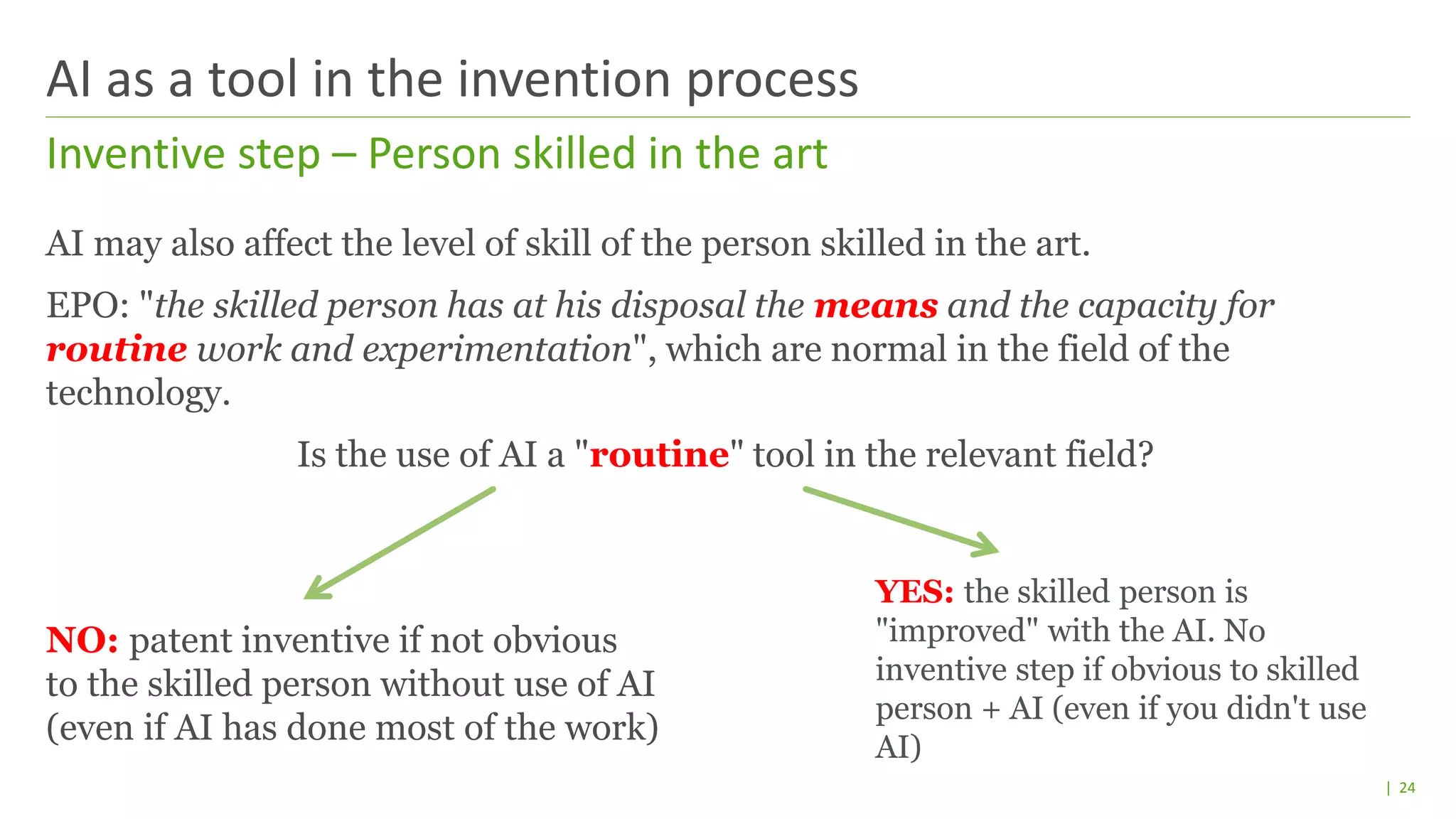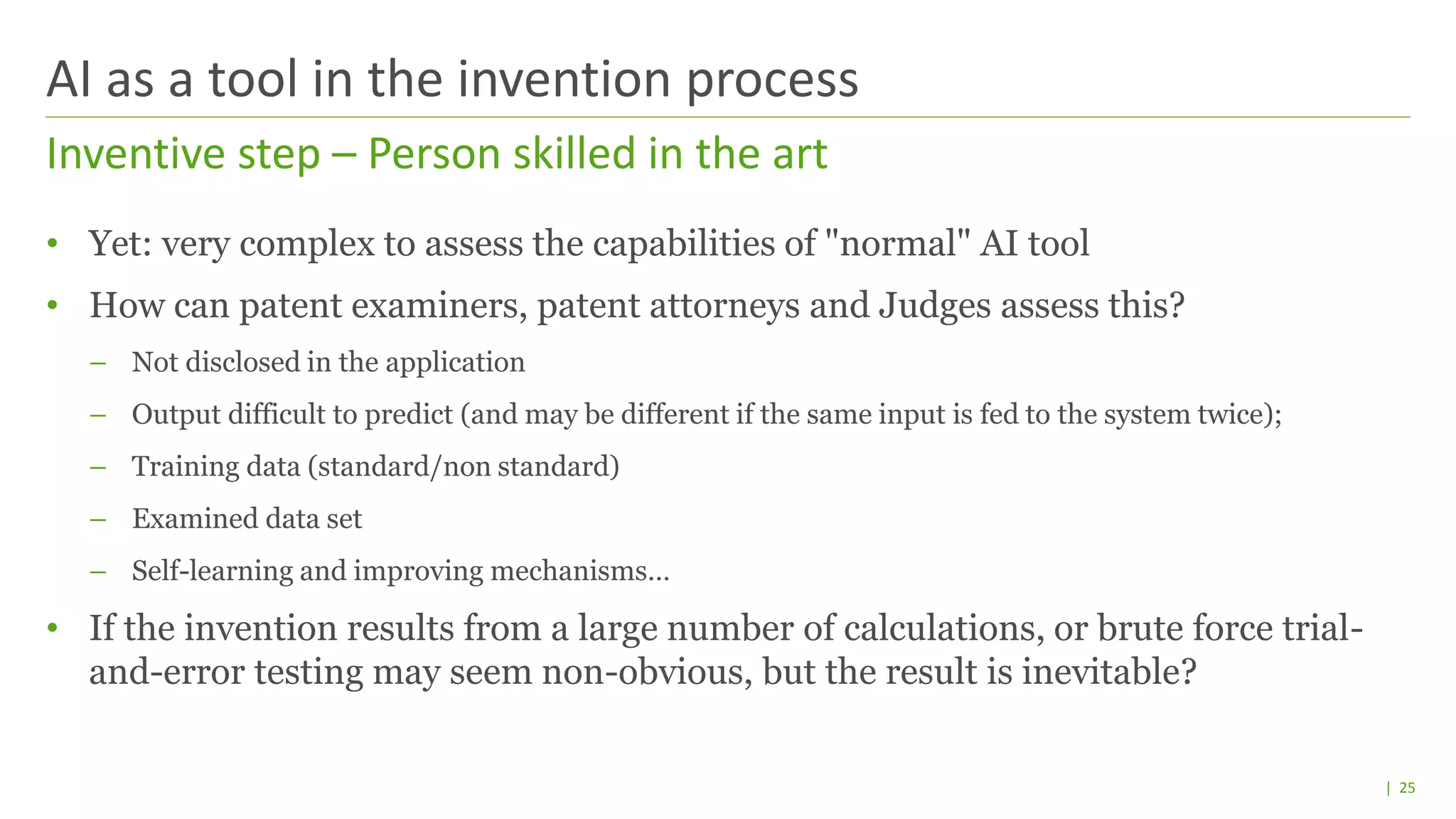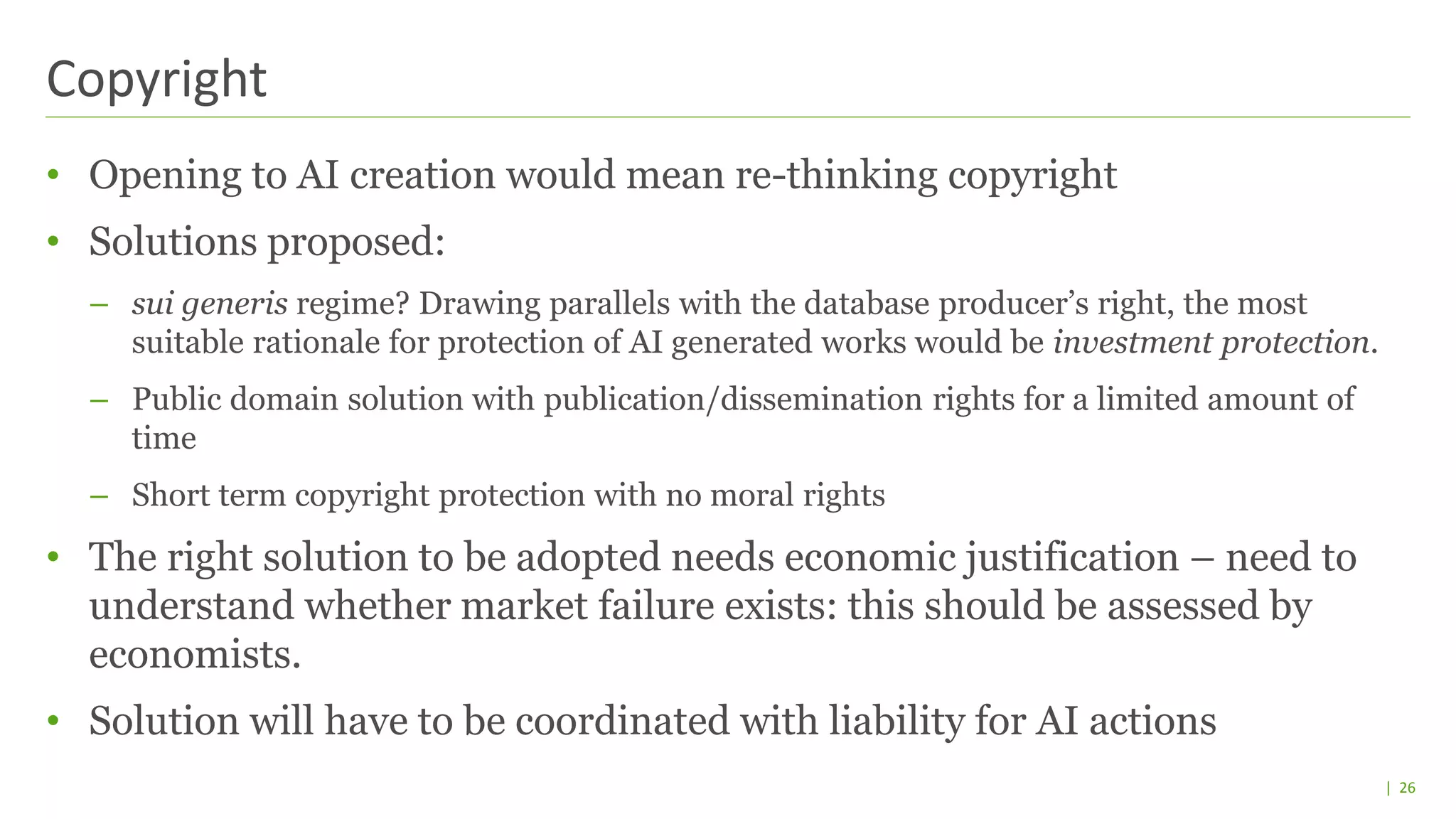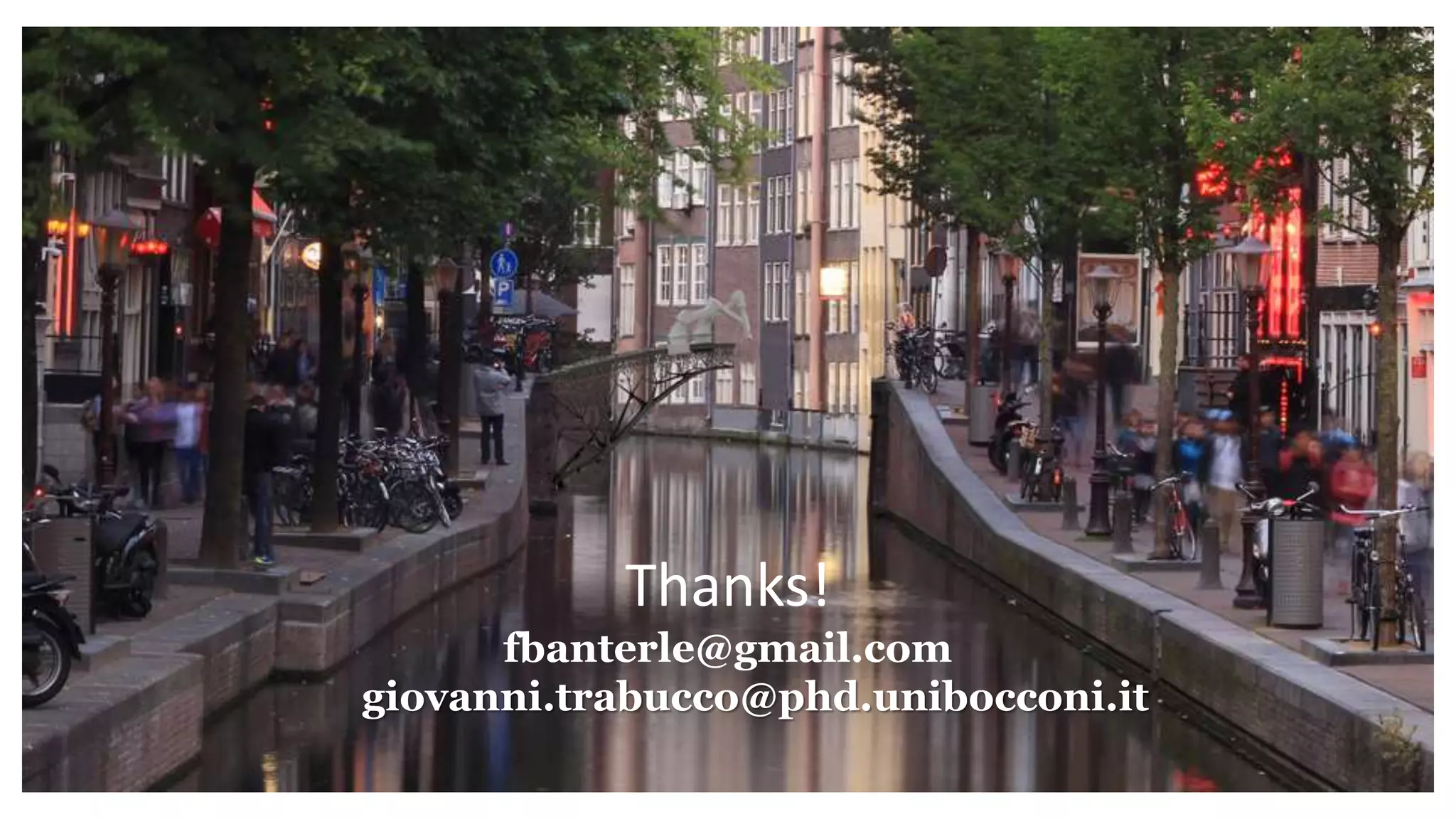The document compares copyright and patent laws in relation to artificial intelligence's role in creativity and invention, exploring whether AI can be recognized as an inventor or author. It highlights the current legal frameworks that view authors and inventors as humans, raising questions about the compatibility of these systems with computational creations. The presentation suggests potential adaptations in legal definitions and protective measures to accommodate the evolving nature of AI-generated works.
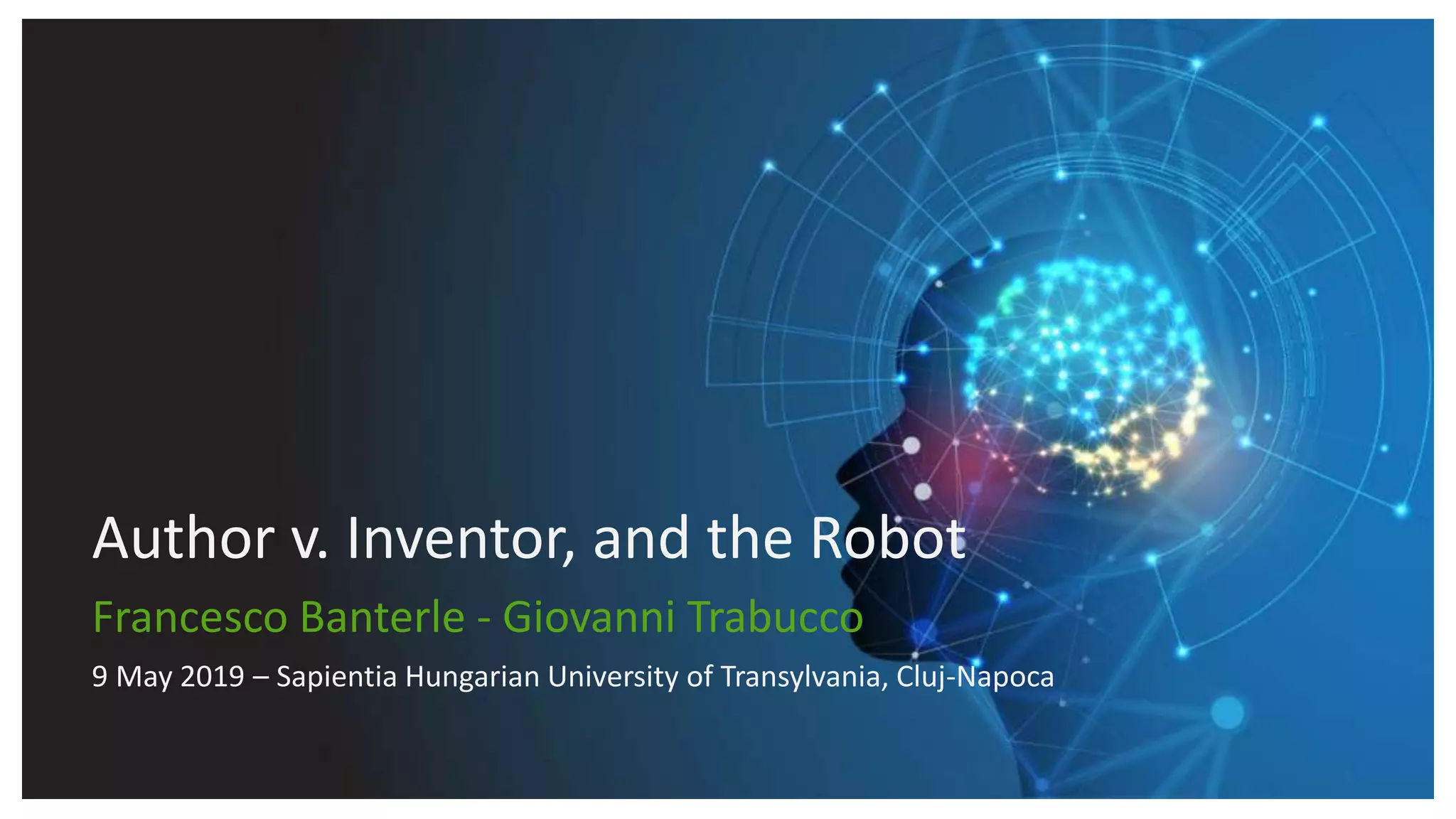
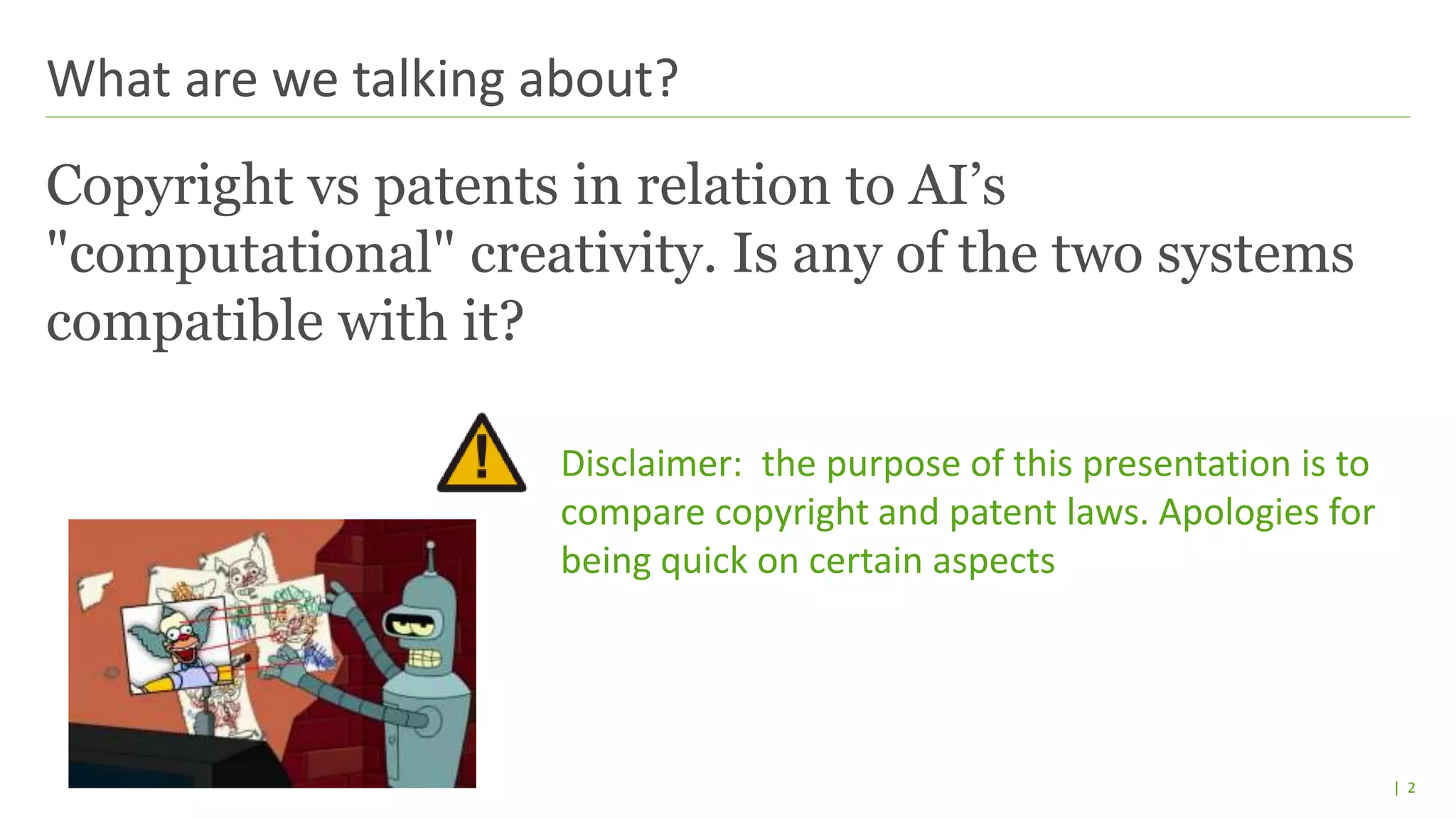
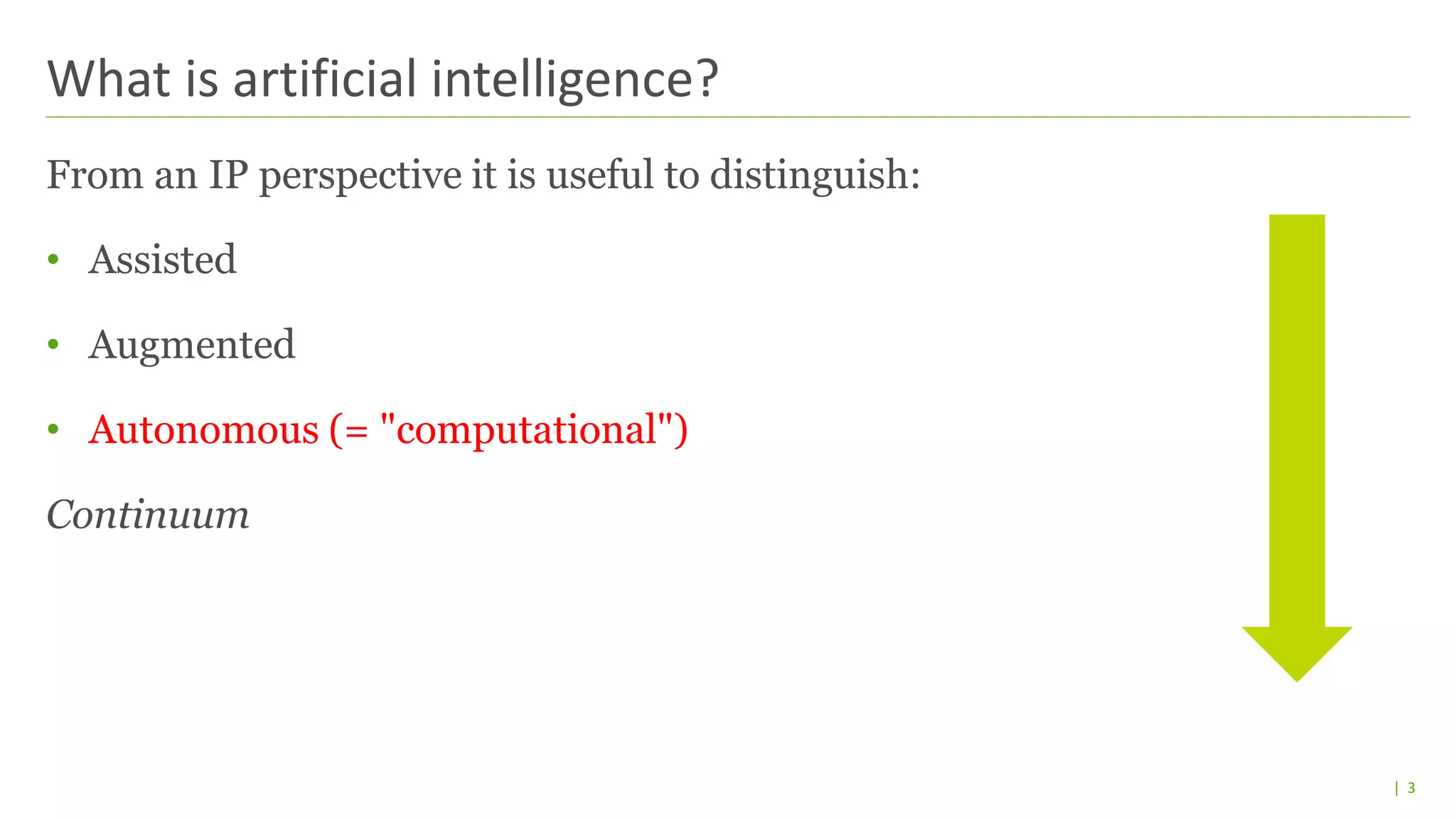
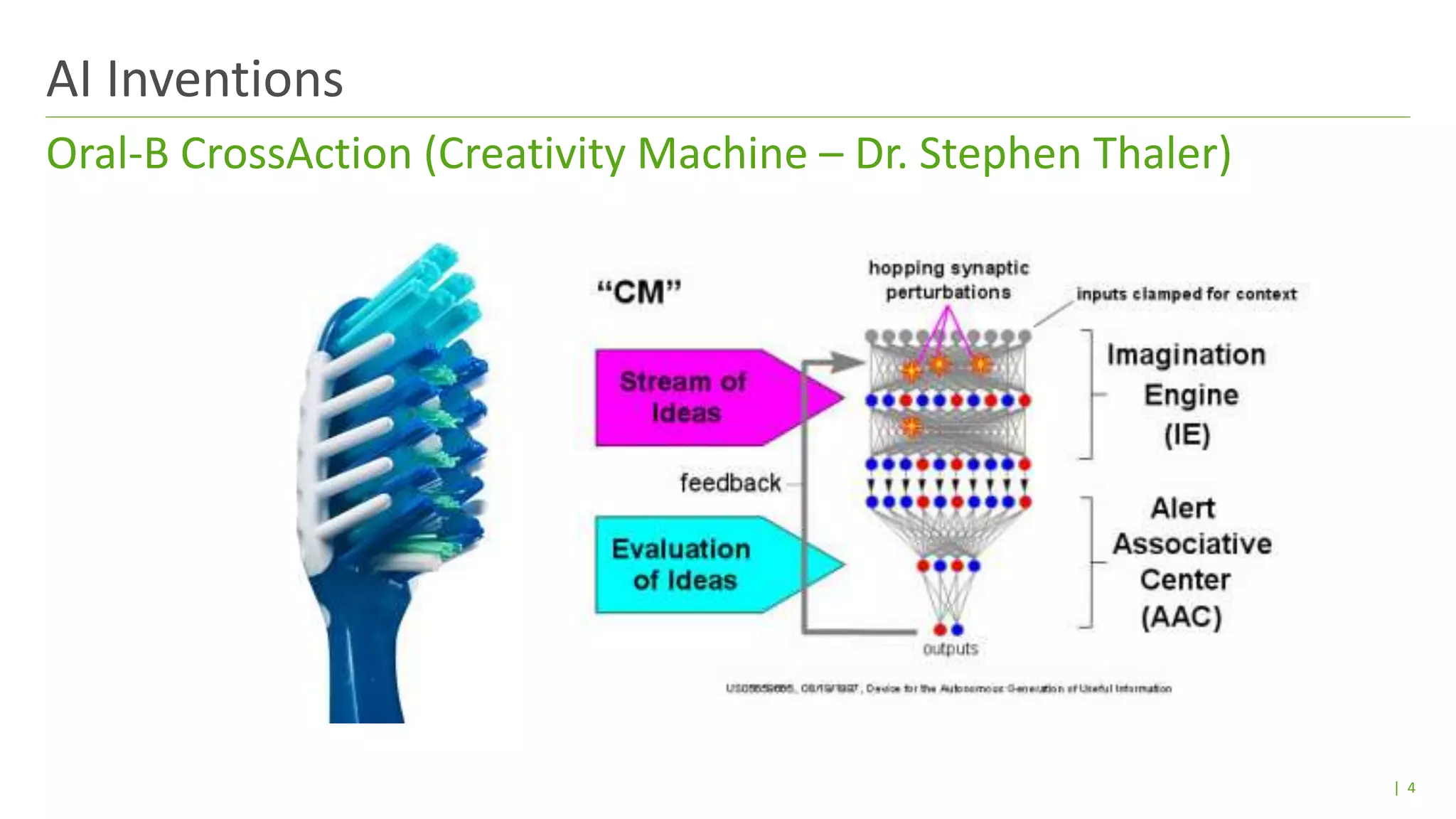

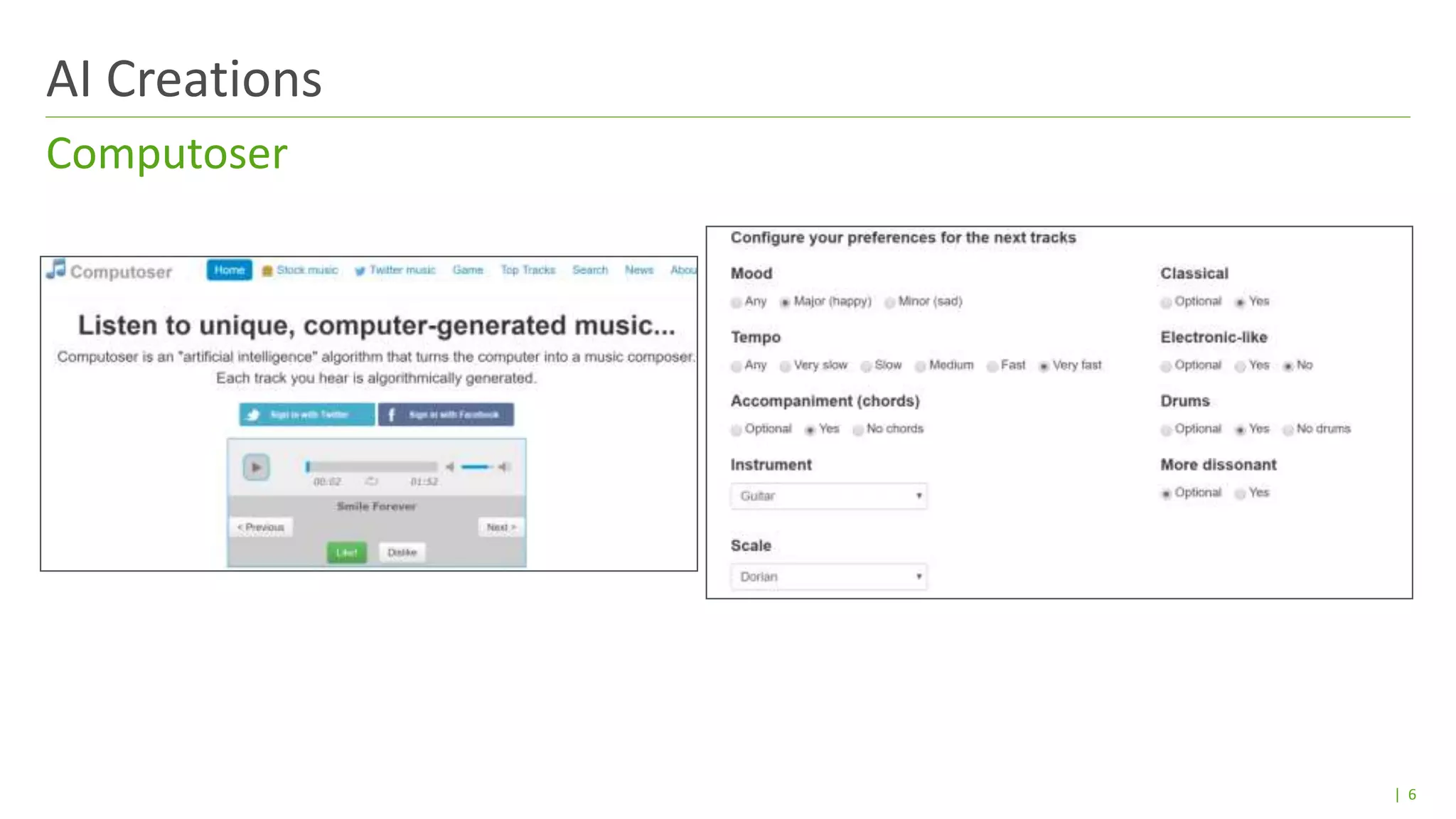
![| 7
Edmond de Belamy, from La Famille de Belamy
AI Creations
min G max D
Ex[log(D(x))]+Ez
[log(1-D(G(z))]
$432,500](https://image.slidesharecdn.com/millib01-256306-v2-authorvinventorandtherobot-190516082037/75/Author-v-Inventor-and-the-robot-7-2048.jpg)
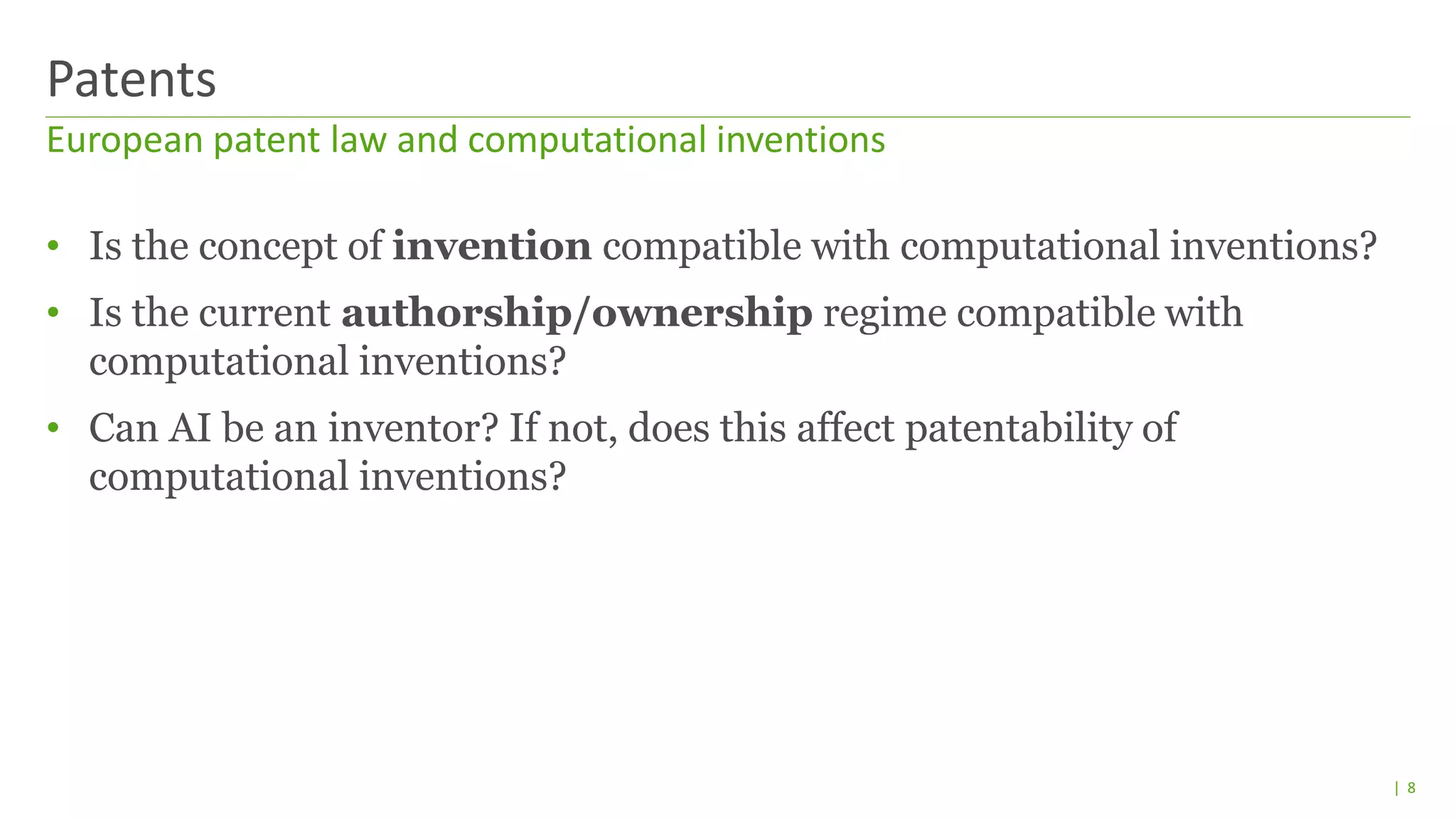
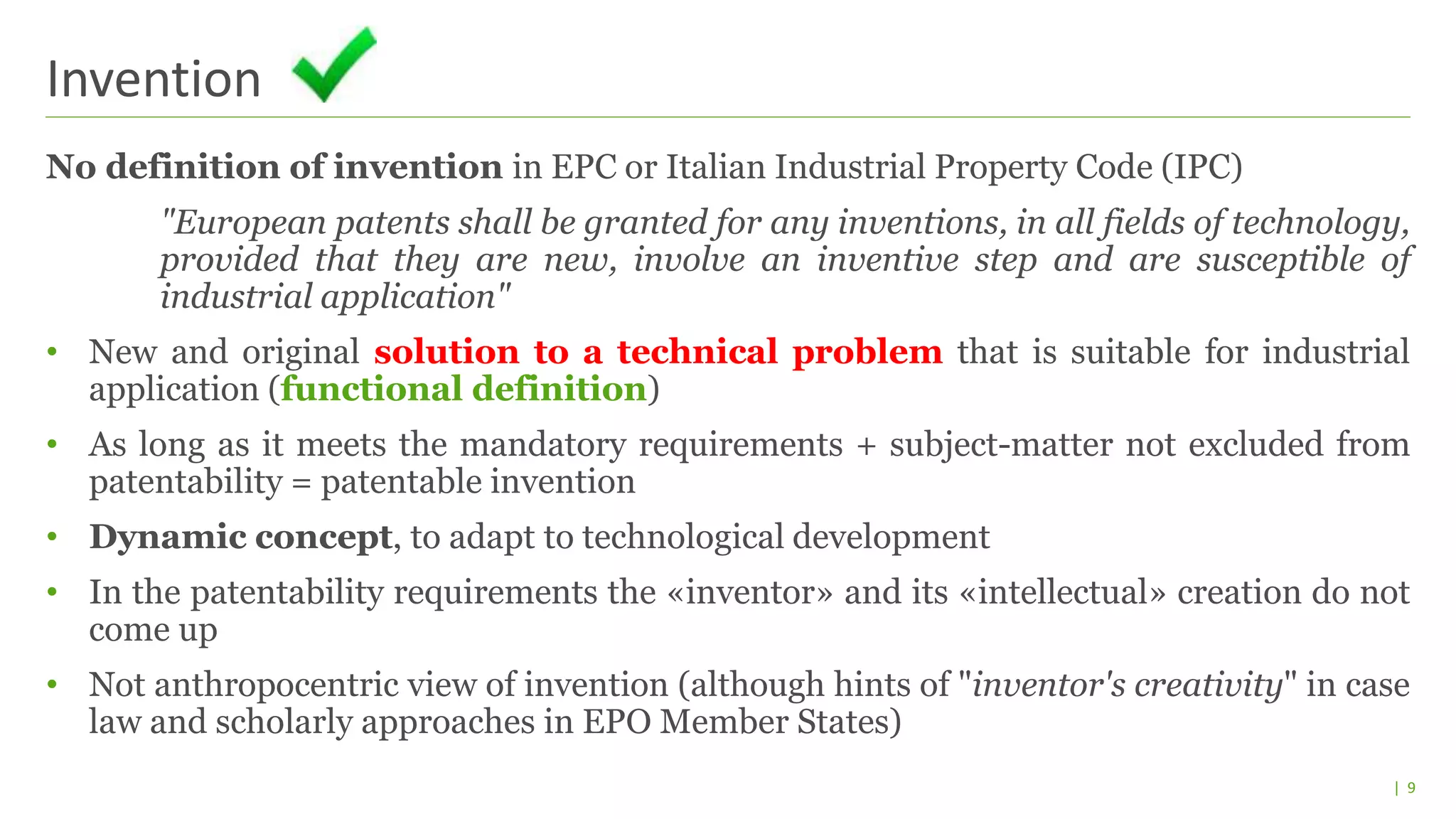
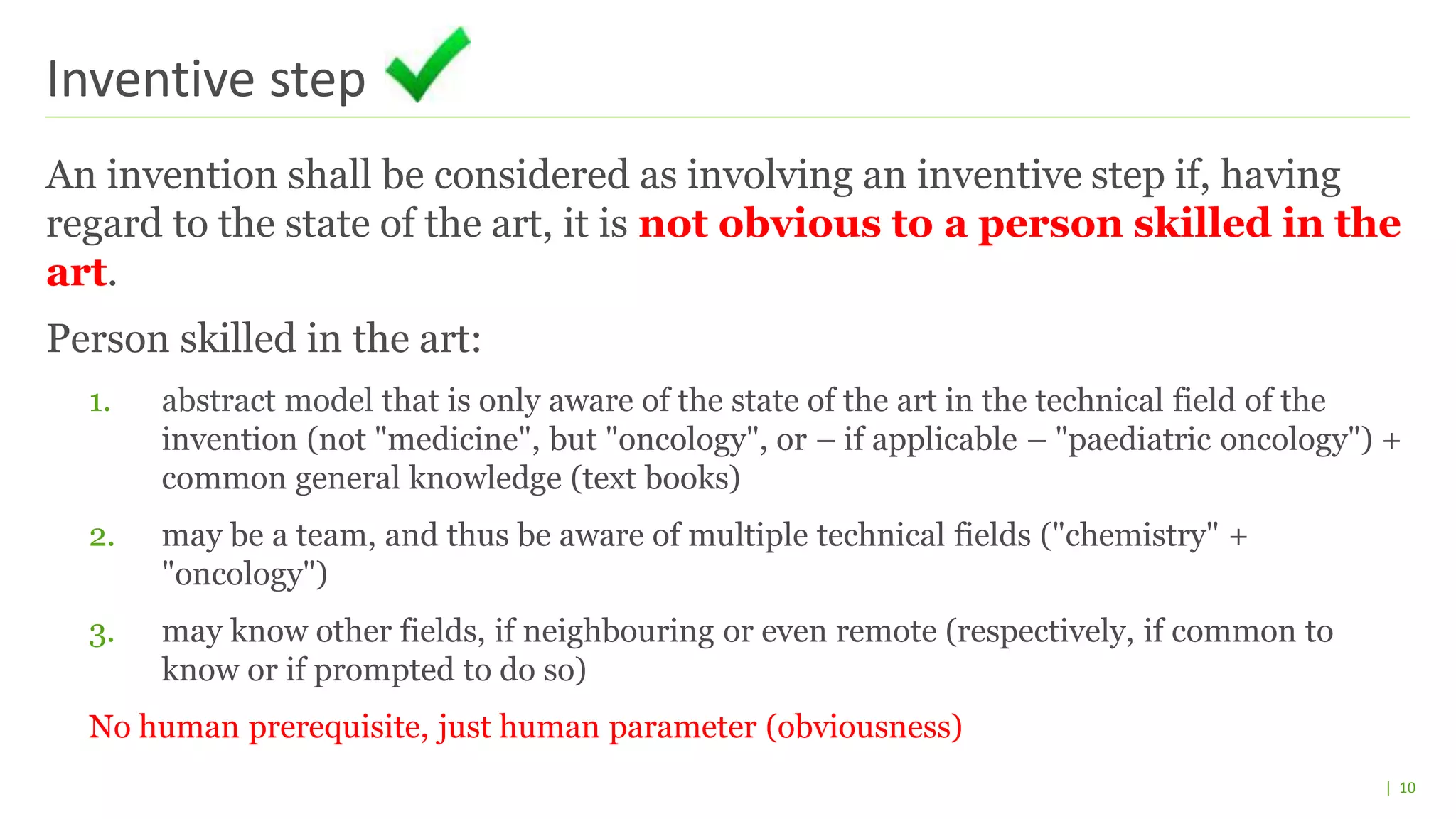
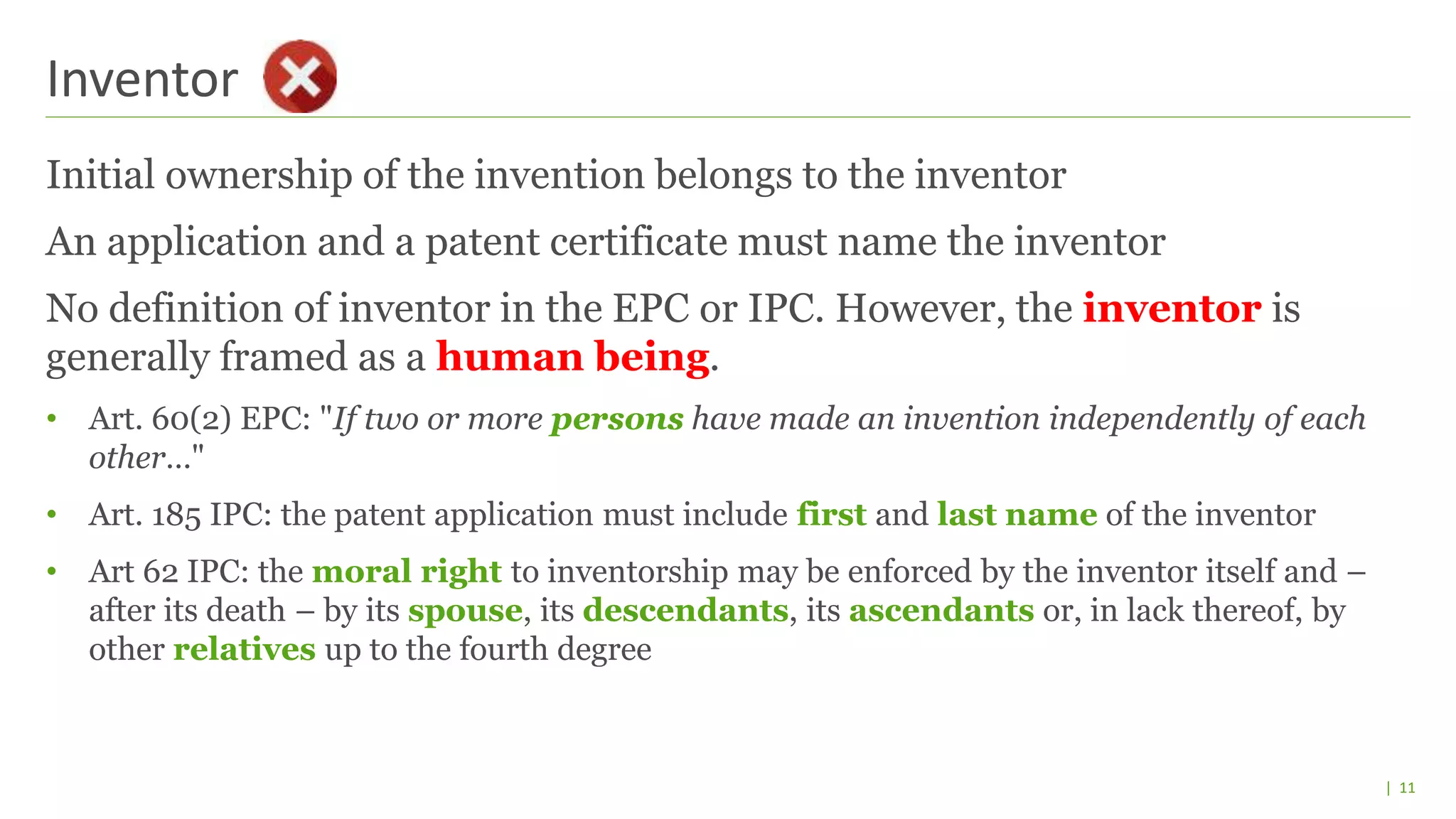
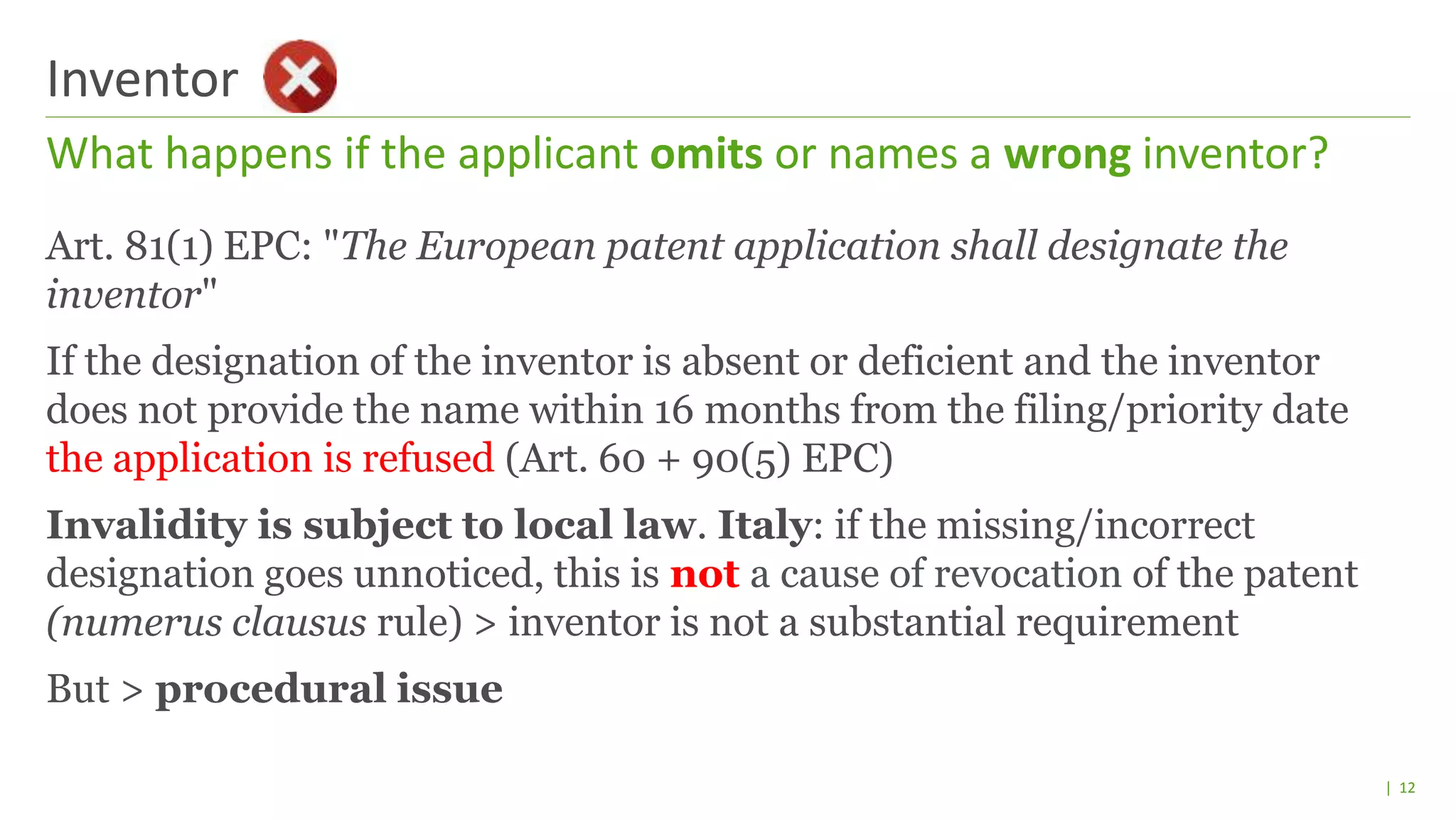
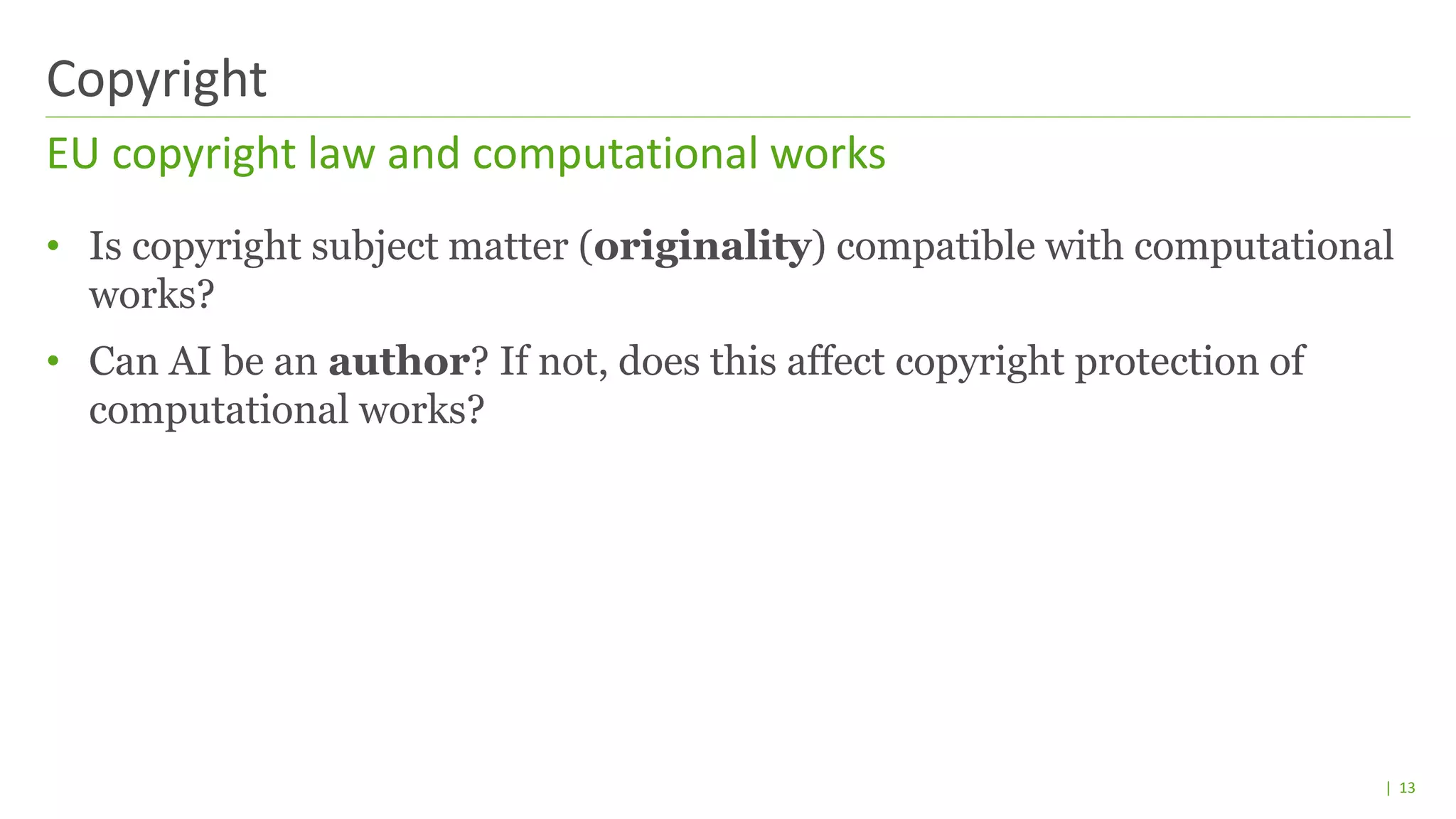
![| 14
• Art. 1(3) Software Directive, Art. 3(1) Database Directive, Art. 6 Term of Protection
Directive
Computer programs, databases and photographs shall be protected if they are original in the sense that
they are the author's own intellectual creation. No other criteria shall be applied to determine their
eligibility for protection.
• Recital 16 of Term of Protection Directive
A photographic work […] is to be considered original if it is the author's own intellectual creation
reflecting his personality.
But…
• Article 2(1) Software Directive - Authorship of computer programs
1. The author of a computer program shall be the natural person or group of natural
persons who has created the program or, where the legislation of the Member State permits, the
legal person designated as the rightholder by that legislation.
[it is a legal fiction - still, an initial human author seems to be necessary]
Originality – In the law
Work protected by copyright](https://image.slidesharecdn.com/millib01-256306-v2-authorvinventorandtherobot-190516082037/75/Author-v-Inventor-and-the-robot-14-2048.jpg)
![| 15
• CJEU – Infopaq decision
Extension the notion of originality as author's own intellectual creation to subject-matter falling within
InfoSoc Directive.
• CJEU – Football Dataco decision
[T]he notion of the author’s own intellectual creation refers to the criterion of originality. [T]hat criterion of
originality is satisfied when […] its author expresses his creative ability in an original manner by making
free and creative choices […] and thus stamps his ‘personal touch’. By contrast, that criterion is
not satisfied when the setting up of the database is dictated by technical considerations, rules or
constraints which leave no room for creative freedom.
• CJEU – Phil Collins/EMI Electrola decision
The specific subject-matter of copyright and related rights is "to ensure the protection of the moral and
economic rights of their holders"
Originality – In the case law
Work protected by copyright](https://image.slidesharecdn.com/millib01-256306-v2-authorvinventorandtherobot-190516082037/75/Author-v-Inventor-and-the-robot-15-2048.jpg)
![| 16
• Art 1 Term of Protection Directive
The rights of an author of a literary or artistic work within the meaning of Article 2 of the Berne
Convention shall run for the life of the author and for 70 years after his death, irrespective of the
date when the work is lawfully made available to the public.
• Art 6bis Berne Convention
Independently of the author's economic rights […] the author shall have the right to claim authorship of the
work and to object to any distortion, mutilation or other modification of, or other derogatory action in
relation to, the said work, which would be prejudicial to his honor or reputation.
The[se ] rights […] shall, after his death, be maintained, at least until the expiry of the economic rights,
and shall be exercisable by the persons or institutions authorized by the legislation of the country where
protection is claimed.
Authorship
Originality = creativity + existence of an author (Ramalho 2017-2019)](https://image.slidesharecdn.com/millib01-256306-v2-authorvinventorandtherobot-190516082037/75/Author-v-Inventor-and-the-robot-16-2048.jpg)
